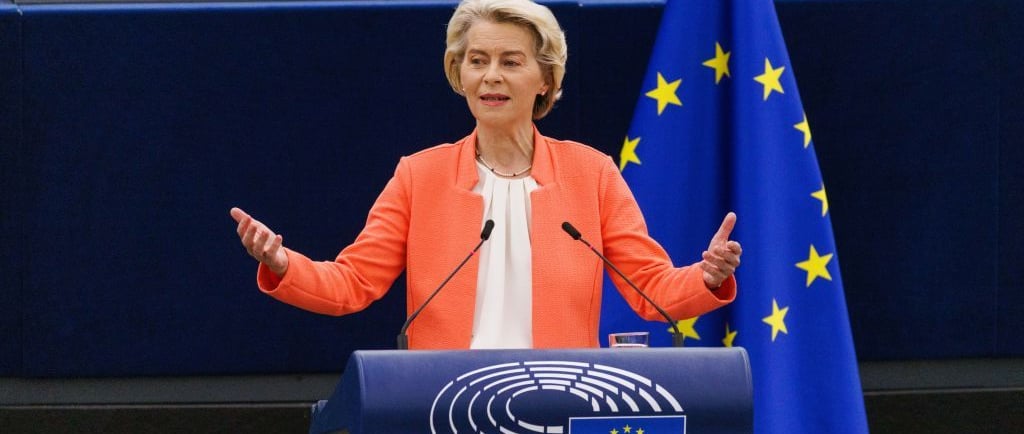ReArm Europe: A Historic Shift With Uncertain Outcomes
Amid rising threats and fading certainties, Europe launches ReArm Europe: its most ambitious defence push since the Cold War. But as political ambition runs up against industrial shortfalls, fiscal pressures, and fragile unity, can it deliver on its promises?
EUROPEAN UNION
Ekaterina Romanenko
4/10/20255 min read


In recent weeks, Europe has witnessed a significant shift in its defense posture. On March 4, 2025, European Commission President Ursula von der Leyen unveiled the "ReArm Europe" initiative, an ambitious plan aimed at mobilizing up to €800 billion to bolster the continent's defense capabilities. This announcement came shortly after the United States temporarily suspended military aid to Ukraine.
The U.S. move triggered an immediate and profound response across Europe. While Washington described the freeze as procedural, its suddenness unsettled allies who had long depended on American security guarantees. Within days, the European Union convened an emergency defense summit in Brussels, during which von der Leyen warned that "Europe faces a clear and present danger, and therefore, it has to be able to protect itself, to defend itself."
The summit produced an ambitious new agenda: an €800 billion initiative to strengthen European defense capabilities, financed through military loans, private capital, and national contributions. The plan proposes activating a fiscal escape clause to allow countries to increase defense spending without breaching EU budget deficit rules. If member states use this clause to raise defense spending by an average of 1.5% of GDP, nearly €650 billion of fiscal space could be created over four years. This "ReArm Europe" program was introduced as a direct response to what von der Leyen called "the end of strategic illusions.
The initiative outlines investments in joint procurement, cyber defense, and advanced weapons systems, with the goal of reducing reliance on American defense contractors and establishing an autonomous European security architecture. Member states are encouraged to streamline their defense industries, harmonize military standards, and develop joint capabilities.
This shift in defense strategy is primarily a response to the growing transatlantic rift. The domestic political polarization in the U.S. and the unpredictable nature of the Trump administration have heightened European leaders' awareness of their vulnerabilities. Although Washington reaffirmed its NATO commitments, the suspension of aid exposed structural weaknesses in Europe’s defense readiness. Some nations, notably Germany, France, and Poland, have pledged to significantly increase their defense budgets.
Germany’s response has been particularly notable. Berlin launched an unprecedented defense initiative, moving to abolish the constitutional "debt brake" that limits government borrowing. In March 2025, Friedrich Merz, leader of the German conservatives, reached an agreement with the Greens to amend the constitution and create a special €500 billion fund. These funds are intended for modernizing the armed forces, upgrading infrastructure, and supporting climate protection programs. According to CNN, this shift represents not just an acceleration of existing plans but a fundamental recalibration of Germany’s security strategy. For decades, Berlin’s defence policy was shaped by the belief in enduring American security guarantees under NATO.
However, the road to rearmament is fraught with challenges. Despite ambitious announcements, Europe’s efforts to enhance its defense capabilities remain uneven, fragmented, and plagued by delays.
According to the International Institute for Strategic Studies (IISS), while European defense spending increased by 11.7% in real terms last year, reaching $457 billion, EU countries are still far from the level of rearmament required to meet the new threat environment.
A key obstacle, as highlighted by The Telegraph, is a shortage of ammunition. In 2023, the EU launched a plan to supply Ukraine with one million artillery shells within 12 months. However, by the end of the year, fewer than half of the promised shells had been delivered. These delays revealed the limitations of Europe’s industrial capacity and its dependence on aging production lines.
Political hesitation also slows progress. Despite declarations of increased defense budgets, the practical implementation of these plans is hindered by bureaucratic procedures and disagreements among EU member states. For example, although Germany allocated €100 billion for defense, by August 2023, it had signed contracts worth only around €33 billion, underscoring the difficulties in launching defense projects promptly.
Structural problems also persist. Europe’s defense industry remains "fragmented and plagued by duplication," with multiple national projects competing rather than pooling resources. Moreover, European defense companies often struggle to secure long-term contracts, discouraging investment in expanding production. This uncertainty leaves key players hesitant to scale up, making it even harder to meet growing military needs.
Thus, while Europe’s commitment to rearmament is real, the path forward remains steep. Political inertia, industrial fragmentation, financial caution, and logistical challenges complicate the vision of a stronger, more autonomous European defense.
The economic consequences of Europe’s rearmament efforts are already becoming evident. On one hand, defense spending is expected to stimulate sectors such as manufacturing, cybersecurity, and high-tech industries. Analysts from ING note that Europe’s increased defense budgets could contribute around 0.1–0.2% to GDP growth annually between 2026 and 2027, assuming efficient allocation of funds. Major defense contractors such as Airbus, Leonardo, and Rheinmetall are well-positioned to benefit from new procurement contracts as part of the EU’s broader defense strategy.
On the other hand, the economic risks of these increased defense expenditures are considerable. Financing the €800 billion defense plan primarily through loans could exacerbate fiscal imbalances in highly indebted countries. ING analysts warn that this could put additional pressure on economies already burdened by high public debt. Additionally, rising interest rates across the eurozone are driving up borrowing costs, further intensifying fiscal challenges in vulnerable economies. The European Central Bank (ECB) has expressed concern that it may not be willing to support extensive new military debt without assurances of financial stability. ECB President Christine Lagarde emphasized that the bank’s role is to ensure price stability, not to finance military expenditures for EU member states.
Global business is also recalibrating in response to Europe’s shift. Energy markets, in particular, are highly sensitive, as rearmament plans are expected to increase demand for critical raw materials such as lithium, cobalt, and rare earth elements, intensifying competition with China and the U.S. Defense-related investments are poised to rise, but sectors focused on environmental and social governance may face headwinds as governments prioritize security over green transition goals. As The St Andrews Economist points out, European policymakers will face increasing difficulties balancing military needs with climate commitments.
Looking ahead, the success of the European rearmament initiative hinges on several uncertain factors. First and foremost, political cohesion within the European Union remains fragile.
Furthermore, the program’s success will depend on the ability of European industries to overcome bottlenecks and accelerate production. Without deep structural reforms to streamline procurement processes and consolidate the defense sector, rearmament risks remaining more of a political aspiration than an operational reality.
Additionally, Europe’s reliance on external suppliers for critical materials could undermine its defense ambitions. A tense geopolitical environment, marked by increasing competition with China over rare earth elements and the uncertain future of transatlantic relations, adds further complexity to this challenge.
Lastly, fiscal tensions are likely to increase. If public debt rises sharply and economic growth remains sluggish, political support for large-scale military investments could erode, leading to a vicious cycle of rising security risks and diminishing resources.
Thus, while Europe’s new defense drive signals a historic awakening, it faces significant internal and external obstacles. Whether the "ReArm Europe" initiative will succeed or falter depends on political will, industrial reform, and the ability to maintain economic resilience under mounting pressure.


